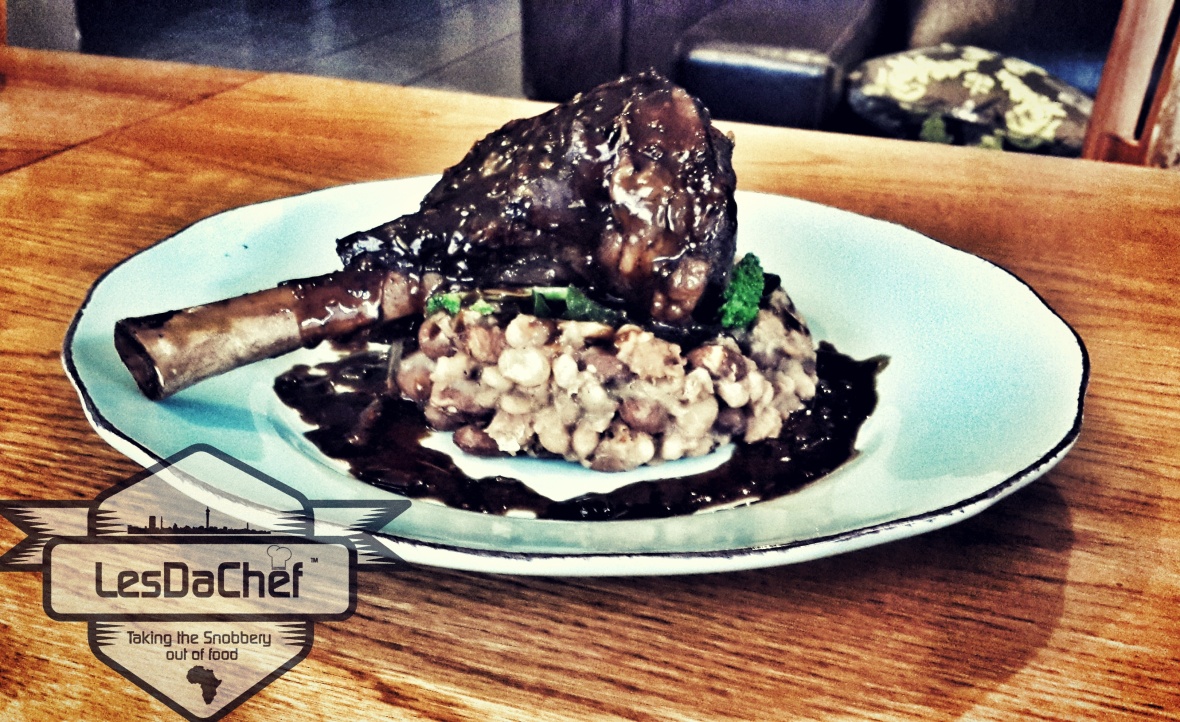Every chef has a “go-to” dish that they know is guaranteed to work every time. It has the “wow” factor without needing too much effort. One of those dishes for me is lamb shank. Always impressive when presented to a guest and most meat eaters love it. There really isn’t that much work involved in getting it ready though except patience and an understanding of flavours. Meat that’s still on the bone has a lot of flavour and is perfect when slow cooked as the marrow melts during the cooking process…which adds more meaty flavours to the final product.
Unlike my previous recipe posts I’m not going to type up an ingredients list for this one. The reasons I’m choosing to rather give the method rather than the recipe is because every lamb shank is different. Not to sound like a cliche but that is the truth. Some are big, others tiny. A sheep is classified as a lamb from 0 months until 12 months old. So you will get a huge variety of different textures and amounts of fat in every shank. Unlike with steaks or beef cuts, the age of a lamb actually does matter. So I’m trusting you to use your own personal discretion with this…but this is a fail proof method so I doubt you’ll go wrong.

Step 1: Make sure the lamb shanks are fully thawed and free of all liquid. Mix chutney, olive oil, fresh rosemary, thyme, all spice, star anise, crushed coriander, pepper and some salt together and rub the shanks with it. Allow to rest and marinate in the fridge for 6 hours or overnight.
Step 2: Get a large pan piping hot on the stove and place the shanks lengthways into the hot pan. Keep turning the shanks until browned and well sealed off. Remove and place the shanks in a casserole and put tomato paste into the same pan you just used to seal off the shanks. Allow the tomato paste to go brown and then add some Merlot wine (you can use any type of red wine you choose but I personally prefer Merlot, its less dry), simmer the pot and pour the left over marinade from the container you marinated the lamb in into the liquid. Once the liquid has become relatively think, pour in enough vegetable stock to make enough liquid to cover the lamb in the casserole. Pour the sauce over the lamb, wrap the casserole dish in foil, making sure all gaps and holes are sealed.
Step 3: Slow roast the lamb in the oven at about 160 degrees celsius for 3 hours. Keep checking up on it every hour or so. After the 3 hours remove the lamb shanks from the dish, you’ll notice the liquid has actually become oily with a layer of oil on its service. In the kitchen we’d place the liquid in the fridge for an hour or so, this will cause the fat to solidify on the surface, we’d scrape this off and use the rich sauce left underneath as our sauce. You can choose to do this too but if you’re in a rush take 100g flour and mix it with 100g butter (this is classically called a ‘beurre manie’ in French cuisine), whisk it piece by piece into the sauce over a medium heat until the sauce begins to thicken. Season the sauce with a bit of chutney and salt and pour it over the shanks again and when serving them.
That’s it really. You can obviously play around and do whatever you like with your lamb shank but this is the way I do it and I’ve been asked over and over for the recipe. There really isn’t that much to it.
This sounds yummy – definitely trying it the weekend!
You say mix the chutney in the first step. Is this the store bought kind like Mrs Ball’s?
Yes. It’s Mrs Ball’s chutney
The vegetable stock is it the normal cube or liquid vegetable stock?